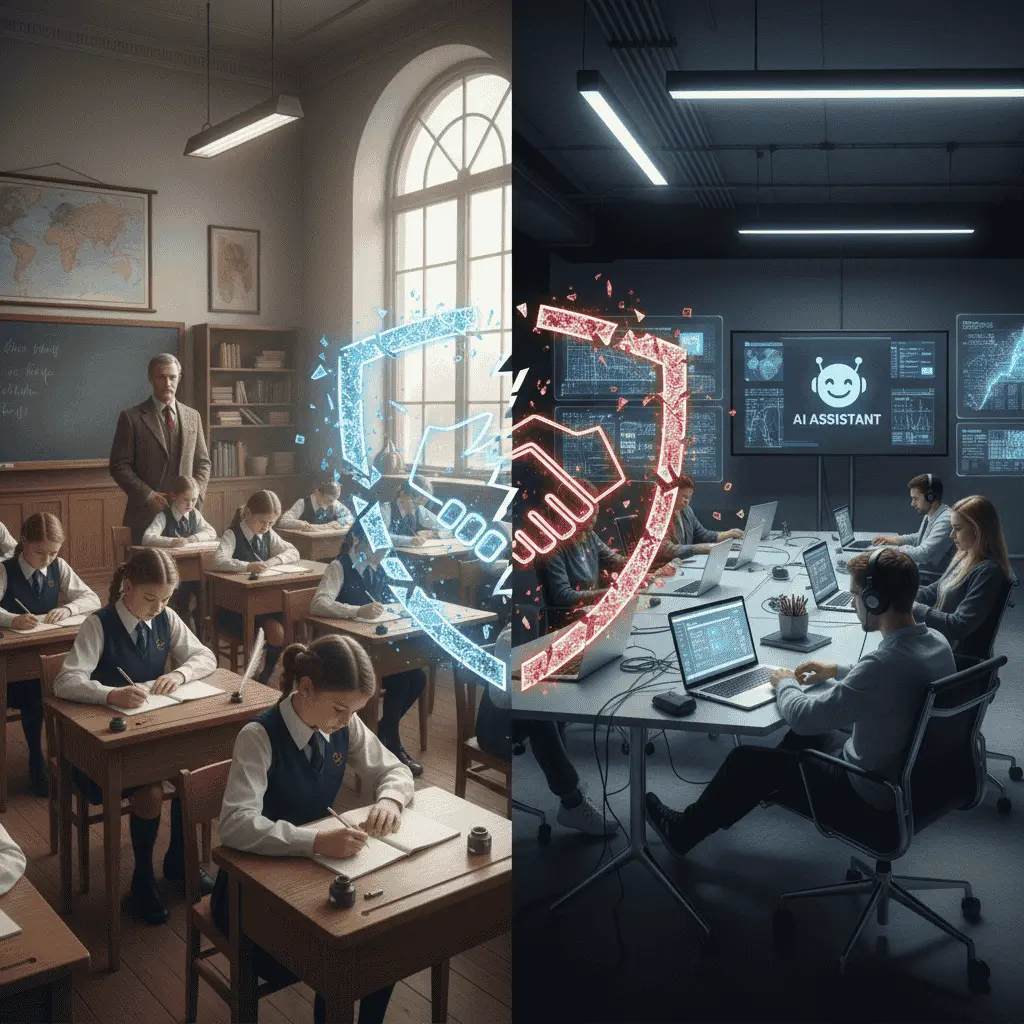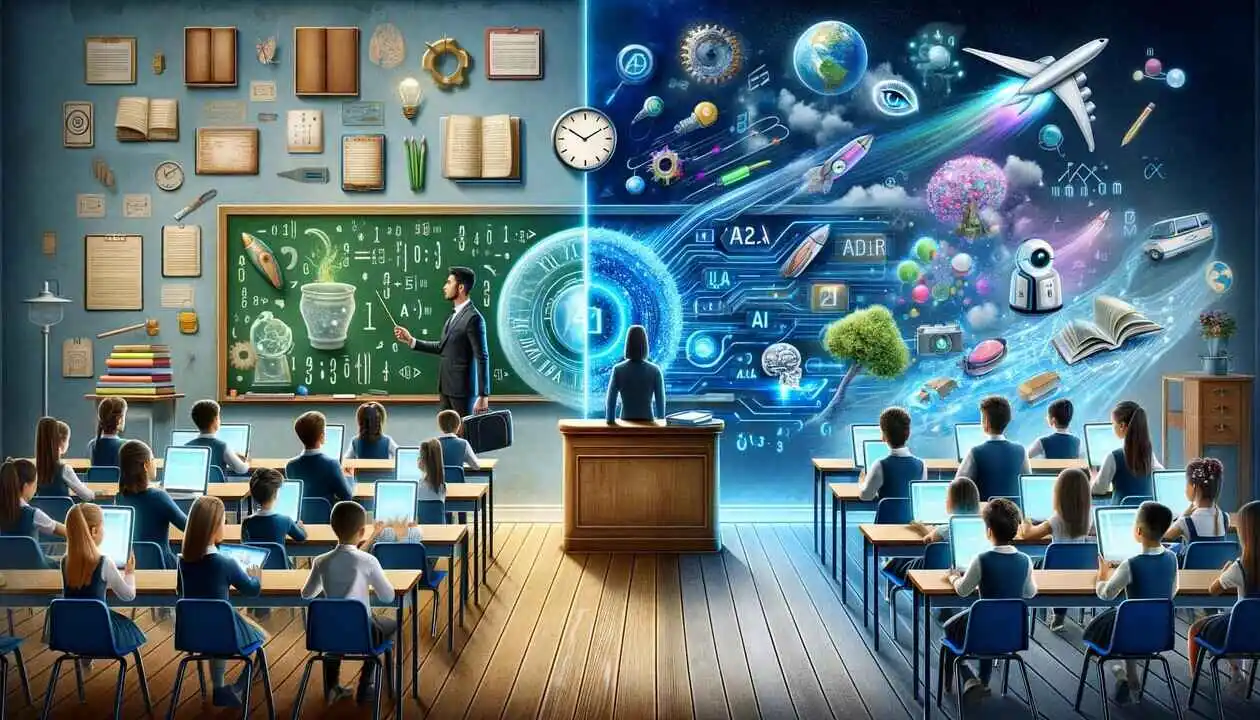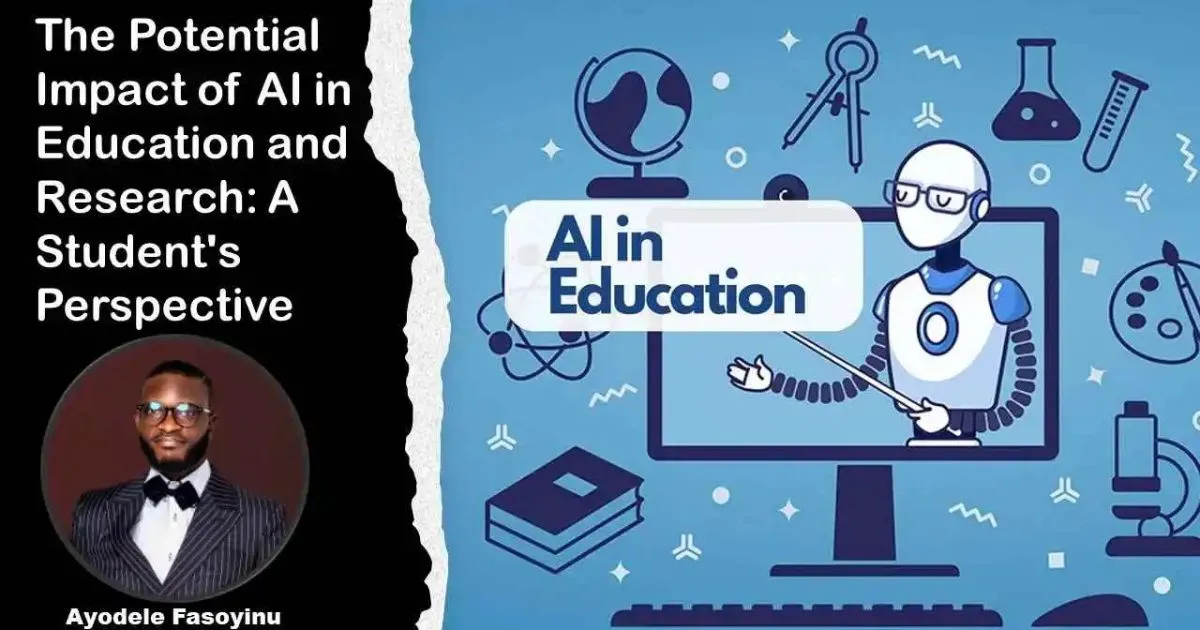AI in Classroom
Proper use of AI in classroom settings can personalize student learning paths. Many teachers worry about cheating with AI in classroom assignments. The debate over AI in classroom environments focuses on ethics and equity. Implementing AI in classroom technology requires significant teacher training.
AI in Classrooms: Trust, Challenges, and Solutions
1. What’s the Problem? The New Trust Gap

2. Student Perspective: AI as a Shortcut
3. Teacher Perspective: Suspicion, Stress & AI Detectors

4. Comparison: AI Challenges in American vs Indian Schools

| Aspect | American Schools | Indian Schools |
|---|---|---|
| Trust Issues | Sharp drop in student-teacher trust due to AI-based cheating; detectors causing false accusations | Trust issues emerging but less surveillance; focus more on access, equity and over-dependence risk |
| Assessment Style | Heavy reliance on written assignments, essays, digital submissions | Mix of written, oral, practical exams, but digital assignments increasing rapidly |
| AI Tool Adoption | Very high among students, strict institutional policies in place | Growing rapidly, mixed regulations, significant digital divide |
| Detection Usage | Common but controversial; many universities banning detectors | Rare currently but could increase as AI usage grows |
| Scale Challenge | Manageable class sizes for personalized assessment | Large class sizes make individualized monitoring difficult |
With AI in classroom tools, administrative tasks like grading can be automated.The future of AI in classroom applications depends on responsible development.A major challenge for AI in classroom adoption is the risk to student privacy.
5. The Real Solution: Rethinking Education, Not Surveillance
Here are evidence-based solutions for students and teachers:
Practical Solutions for Both Countries:
- Focus on Process Over Product: Encourage handwritten assignments, oral presentations, and real-time group projects that require active participation and cannot easily be completed by AI alone.
- Encourage AI Knowledge: Inform students of AI’s potential as well as its drawbacks. Teach them to use AI for research and ideation in an ethical manner, not to replace their own judgment.
- Assessment Redesign: Replace final answers with work portfolios, reflection journals, peer discussions, and examples of thought processes when assigning grades.
- Transparent Guidelines: Remove any ambiguity regarding the proper and improper uses of AI tools for schoolwork by establishing clear, precise guidelines.
- Collaborative Learning: Emphasize group projects, peer reviews, and classroom discussions that require human interaction and original thought synthesis.
- Address Digital Divide: Especially important in India – ensure solutions don’t widen the gap between students with different levels of technology access.
- Teacher Training: Provide educators with ongoing training on new assessment techniques, ethical AI integration, and keeping abreast of changing digital trends.
- Focus on Human Skills: Stress critical thinking, creativity, emotional intelligence, and sophisticated problem-solving skills that AI cannot imitate.
Pros & Cons of AI in Education
Pros
- Personalized learning boosts performance
- Saves teachers time with auto-grading
- Increases student engagement
- Improves accessibility for all
- Offers data-driven insights
Cons
- Risk of AI-assisted cheating
- Detectors give false positives
- May reduce critical thinking
- Raises privacy concerns
- Can weaken human connection
It’s time to create a cutting-edge, trustworthy educational system that values human connection while embracing technology. Instead of raising suspicions or depending on faulty detection methods, real change comes from changing the way we teach, learn, and evaluate. Let’s equip educators and learners with the necessary resources, instruction, and attitude to create an equitable, stimulating, and future-ready learning environment.
